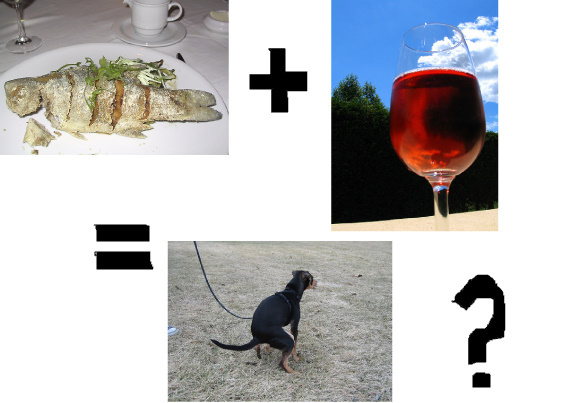
Diner enters restaurant, is seated, and peruses the menu.
He places the menu on the table, indicating that a decision has been made. The server greets the diner and takes the Diner's order, but what's this? Red wine with fish? The Cardinal Sin! Not on my watch!
The Server, aghast: "One moment sir, I'll fetch the sommelier."
Diner: "That won't be nec..."
Server: "One moment sir, just one moment."
Sommelier enters scene, corkscrew a blazin': "May I make some recommendations, sir?"
Diner: "I'll have the Argentinian Malbec with my Mackerel please."
Sommelier: "Instead Sir, may I recommend a New Zealand Savignon Blanc?"
Diner: "The terrior at this particular Château, mon frier, has a very low iron content. I will have the Malbec and I will wallow in my own decanal and heptanal if the case may be, thank you."
Sommelier: "Um, but, um. But the tannins, sir, the tannins. Um. Very well."
What did the diner know that the sommelier didn't? What's this about iron? In a recent article published this past August in the Journal of Agricultural and Food Chemistry, a team of crack-shot food scientists broke open the door to pairing red wine with fish... and it's not the tannins.
According to The Economist's synopsis of the results, Red Rags, over the course of four sessions, seven experienced wine tasters examined 38 red wines, 26 white wines, 2 sherries, a dessert wine, a port and a Madeira. They published their results in The study looks quite comprehensive to me.
The researchers found that wines with a naturally high iron content, not necessarily a high tannin content, produced fishy flavors. They took iron out of wines and reduced the fishy-ness. The added iron to wines without and induced it. They added zinc, manganese and copper to see if it may have been another metal - but they found no change.
Finally, they soaked scallops in wines and analyzed the resulting chemicals. They found hexanal, heptanal, 1-octen-3-one, (E,Z)-2,4-heptadienal, nonanal, and decanal. Obvious potent volatile compounds of fishy aftertaste (to food scientists, I suppose).
What does this mean to you and me? Nothing really. There is no one out there measuring iron content in wine and there doesn't seem to be a correlation between grape variety or soil that can rule it out. They did; however, find that highly acidic wines "played nice" with seafood because the acids acted as chelating agents and reduced the iron content.
What wines tend to be acidic? Dry whites typically.
(photos courtesy of Vincent Ma, gak, and Ian B. Line)
